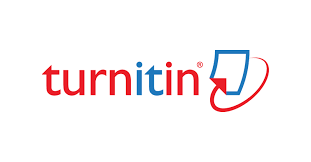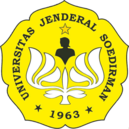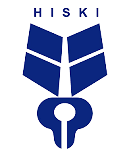Submission Preparation Checklist
As part of the submission process, authors are required to check off their submission's compliance with all of the following items, and submissions may be returned to authors that do not adhere to these guidelines.- The submission has not been previously published, nor is it before another journal for consideration (or an explanation has been provided in Comments to the Editor).
- The submission file is in OpenOffice, Microsoft Word, or RTF document file format.
- Where available, URLs for the references have been provided.
- The text is single-spaced; uses a 12-point font; employs italics, rather than underlining (except with URL addresses); and all illustrations, figures, and tables are placed within the text at the appropriate points, rather than at the end.
- The text adheres to the stylistic and bibliographic requirements outlined in the Author Guidelines.
Author Guidelines
1. Paper Title
This is your opportunity to attract the reader’s attention. Remember that readers are the potential authors who will cite your article. Identify the main issue of the paper. Begin with the subject of the paper. The title should be accurate, unambiguous, specific, and complete. Do not contain infrequently-used abbreviations.
The title of the paper should be in 16 pt bold Berlin Sans FB Demi and be centered. The title should have 0 pts space above and 12 pts below.
2. Authors Name and Affiliations
Write Author(s) names without title and professional positions such as Prof, Dr, Production Manager, etc. Do not abbreviate your last/family name. Always give your First and Last names. Write clear affiliation of all Authors. Affiliation includes: name of department/unit, faculty, name of university. Please indicate Corresponding Author (include email address) by adding asterisk (*) in superscript behind the name.
Author names should be in 12 pt Times Roman bold with 12 pts above and 12 pts below. Author addresses are superscripted by numerals and centered over both columns of manuscripts. Author affiliations should be in 12 pt Times Roman italic. The body of the text should commence 2 lines (24 points) below the last address.
3. Abstract and Keywords
Abstract should stand alone, means that no citation in abstract. Consider it the advertisement of your article. Abstract should tell the prospective reader what you did and highlight the key findings. Avoid using technical jargon and uncommon abbreviations. You must be accurate, brief, clear and specific. Use words which reflect the precise meaning, Abstract should be precise and honest. Please follow word limitations (100‐300 words). Abstracts are written in English.
Keywords are the labels of your manuscript and critical to correct indexing and searching. Therefore the keywords should represent the content and highlight of your article. Use only those abbreviations that are firmly established in the field. e.g. JSL. Each words/phrase in keyword should be separated by a semicolon (;), not a comma (,).
4. Introduction
In Introduction, Authors should state the objectives of the work at the end of introduction section. Before the objective, Authors should provide an adequate background, and very short literature survey in order to record the existing solutions/method, to show which is the best of previous researches, to show the main limitation of the previous researches, to show what do you hope to achieve (to solve the limitation), and to show the scientific merit or novelties of the paper. Avoid a detailed literature survey or a summary of the results.
5. Materials and Methods
Materials and methods should make readers be able to reproduce the experiment. Provide sufficient detail to allow the work to be reproduced. Methods already published should be indicated by a reference: only relevant modifications should be described. Do not repeat the details of established methods.
6. Results and Discussion
Results should be clear and concise. The results should summarize (scientific) findings rather than providing data in great detail. Please highlight differences between your results or findings and the previous publications by other researchers.
The discussion should explore the significance of the results of the work, not repeat them. A combined Results and Discussion section is often appropriate. Avoid extensive citations and discussion of published literature.
In discussion, it is the most important section of your article. Here you get the chance to sell your data. Make the discussion corresponding to the results, but do not reiterate the results. Often should begin with a brief summary of the main scientific findings (not experimental results). The following components should be covered in discussion: How do your results relate to the original question or objectives outlined in the Introduction section (what)? Do you provide interpretation scientifically for each of your results or findings presented (why)? Are your results consistent with what other investigators have reported (what else)? Or are there any differences?
7. Conclusions
Conclusions should answer the objectives of research. Tells how your work advances the field from the present state of knowledge. Without clear Conclusions, reviewers and readers will find it difficult to judge the work, and whether or not it merits publication in the journal. Do not repeat the Abstract, or just list experimental results. Provide a clear scientific justification for your work, and indicate possible applications and extensions. You should also suggest future experiments and/or point out those that are underway.
8. Acknowledgement
Recognize those who helped in the research, especially funding supporter of your research. Include individuals who have assisted you in your study: Advisors, Financial supporters, or may other supporter i.e. Proofreaders, Typists, and Suppliers who may have given materials.
9. References
Citations and references are written according to the American Psychological Association (APA) 6th edition style.
Cite the main scientific publications on which your work is based. Cite only items that you have read. Do not inflate the manuscript with too many references. Avoid excessive self‐citations. Avoid excessive citations of publications from the same region. Check each reference against the original source (authors name, volume, issue, year, DOI Number). Please use Reference Manager Applications like EndNote, Mendeley, Zotero, etc. Use other published articles in the same journal as models.
All publications cited in the text should be included as a list of references. References are sequentially numbered as they appear in the text. Reference numbers are indicated in square brackets. Please ensure that every reference cited in the text is also present in the reference list (and vice versa). Any references cited in the abstract must be given in full. Unpublished results and personal communications are not recommended in the reference list, but may be mentioned in the text. If these references are included in the reference list they should follow the standard reference style of the journal and should include a substitution of the publication date with either “Unpublished results” or “Personal communication”. Citation of a reference as 'in press' implies that the item has been accepted for publication.
As a minimum, the full URL should be given and the date when the reference was last accessed. Any further information, if known (DOI, author names, dates, reference to a source publication, etc.), should also be given. Web references can be listed separately (e.g., after the reference list) under a different heading if desired, or can be included in the reference list.
Please ensure that the words 'this issue' are added to any references in the list (and any citations in the text) to other articles in the same Special Issue.
This journal has standard templates available in key reference management packages EndNote (http://www.endnote.com/support/enstyles.asp), Reference Manager (http://refman.com/support/rmstyles.asp), or Mendeley (http://www.mendeley.com). Using plug-ins to word processing packages, authors only need to select the appropriate journal template when preparing their article and the list of references and citations to these will be formatted according to the journal style, which is described below.
Recommendations for references are:
- Include ALL authors. et al., for multiple authors is not acceptable.
- When referencing in the body of text, use 12pt Times Roman.
- Types of references are as follows:
- For a Book, see [1]
- For a Journal Article, see [2]
- For a Proceedings Paper, see [3]
- For a Technical Report, see [4]
- For a Dissertation or Thesis, see [5]
- For an Internet Reference, see [6]
When preparing your reference list, the following should be avoided:
- References not cited in the text.
- Excessively referencing your own work.
- Insufficiently referencing the work of others.
It is also preferable when Authors give DOI number of each reference list in bracket [3], but it is optional for Authors. References list must be written consistently, whether the journal titles are written in short (i.e. Jur. Ilm. Ling. Id.) or in long format (Jurnal Ilmiah Lingua Idea). For short title of journals, please follow the standard here: http://www.efm.leeds.ac.uk/~mark/ISIabbr/J_ abrvjt.html
- [1] Engelmore, R., Morgan, A. eds. (1986). Blackboard Systems. Reading, Mass.: Addison- Wesley. ← Book
- [2] Robinson, A.L. (1980). New Ways to Make Microcircuits Smaller. Science, 208: 1019-1026. ← Journal
- [3] Clancey, W.J. (1983). Communication, Simulation, and In-telligent Agents: Implications of Personal Intelligent Machines for Medical Education. In Proceedings of the Eighth International Joint Conference on Artificial Intelligence, 556-560. Menlo Park, Calif.: International Joint Conferences on Artificial Intelligence, Inc. ←Conferences
- [4] Rice, J. (1986). Poligon: A System for Parallel Problem Solving, Technical Report, KSL-86-19, Dept. of Computer Science, Stanford Univ. ←Report
- [5] Clancey, W.J. (1979). Transfer of Rule-Based Expertise through a Tutorial Dialogue. PhD Dissertation, Department of Computer Science, Stanford University. ←Thesis
- [6] Ivey, K.C. (2 September 1996). Citing Internet sources URL http://www.eei-alex.com/eye/utw/96aug.html. ←Website
10. General Organization of the Paper
The paper will be published in Jurnal Ilmiah Lingua Idea after peer-reviewed process and decided “Accepted” by Editor. The final paper layout will be reproduced by Editorial Office of Jurnal Ilmiah Lingua Idea. The final paper layout in PDF type, known as “Uncorrected Proof” should be corrected by Author.
According to Engelmore and Morgan [1], manuscript content should, in general, be organized in the following order: Title; Authors Name; Authors Affiliation; Abstract; Keywords; Introduction; Materials and Methods; Results and Discussion; Conclusions; Acknowledgments; and References. Manuscript document submitted to this journal (in one MS Word) should be arranged as follow:
- Bodytext of manuscript article (from Title to References, without tables and figures)
- Figure Captions and Table Captions
- Figures
- Tables
Please include Covering Letter in a separated document file containing your summary of scientific finding and uploaded in Supplementary Files.
11. Manuscript Heading, Font, and Spacing
Manuscript should be typed using word processors (Microsoft Word or Open Office) software. The font used throughout the paper is Times New Roman. The paper size is A4 (i.e., 210 x 297 mm), one-column format (i.e., 85 mm each) with a 2.5 cm margin at the top, a 2.5 cm margin at the bottom, 2.5 cm margin on the left, and 2 cm margin on the right. Lines are one-half spaced, justified. Page numbers should be included in the text located in footer section of each page. Use of pronouns such as I, we etc is to be avoided.
12. Section Headings
Three levels of heading are allowed as follows:
- Level 1 (Heading1 format) - 12pt, Times bold, left justified
- Level 2 (Heading2 format) - 12pt, Times bold, left justified
- Level 3 (Heading3 format) - 12pt, Times bold italic, left justified
13. Body Text
The body of the text is a set of body text paragraphs defined as follows:
- 12pt Times New Roman
- One-half space, defined as 12pt
- Spacing after the heading is 3pt
- Spacing before the new heading is 12pt
- Indentation for the first line is 1 cm.
14. Bullets
There are two levels of allowed bulleting:
- This is the first bullet level
- This is a sub-bullet level
15. Enumerated Lists
Lists are sequentially numbers as follows:
- Spacing before the start of list is 3pt
- Spacing after the end of list is 3pt
16. Tables
Tables are sequentially numbered with the table title and number above the table. Tables should be centered in the column OR on the page. Tables should be followed by a line space (12pt). Elements of a table should be single-spaced, however double spacing can be used to show groupings of data or to separate parts within the table. Table headings should be in 10pt bold. Tables are referred in the text by the table number. eg: Table 1. Do not show vertical line in the table. There is only horizontal line should be shown within the table.
17. Figures
Figures are sequentially numbered commencing at 1 with the figure title and number below the figure as shown in Figure 1. Detailed recommendations for figures are as follows:
- Ensure that figures are clear and legible with typed letterings.
- Black & white or colored figures are allowed.
- If a figure spans two columns, it should be placed at the top or bottom of a page.
- Hard copy illustrations should, preferably, be scanned and included in the electronic version of the submission in an appropriate format as follows:
- BMP - Microsoft bitmap file
- WMF - Windows Metafile Format
- EPS - Encapsulated Postscript
- If figures cannot be scanned, the original should be placed in its location within the manuscript using wax or colorless glue.
- The following files are permissible:
- Microsoft Graph
- Microsoft Draw
18. Equations
Equations should be numbered serially within parentheses as shown in Equation (1). Equation should be prepared using MS Equation Editor (not in image format). The equation number is to be placed at the extreme right side.
19. Units, Abbreviations and Symbols
Metric units are preferred. Define abbreviations and symbols at the first time as they are introduced in the text.
Copyright Notice
Authors who publish with Jurnal Ilmiah Lingua Idea agree to the following terms:
- Authors retain copyright and grant the journal right of first publication with the work simultaneously licensed under a Creative Commons Attribution License (CC BY-SA 4.0) that allows others to share the work with an acknowledgment of the work's authorship and initial publication in this journal.
- Authors are able to enter into separate, additional contractual arrangements for the non-exclusive distribution of the journal's published version of the work (e.g., post it to an institutional repository or publish it in a book), with an acknowledgment of its initial publication in this journal.
- Authors are permitted and encouraged to post their work online (e.g., in institutional repositories or on their website) prior to and during the submission process, as it can lead to productive exchanges, as well as earlier and greater citation of published work.




















.png)






